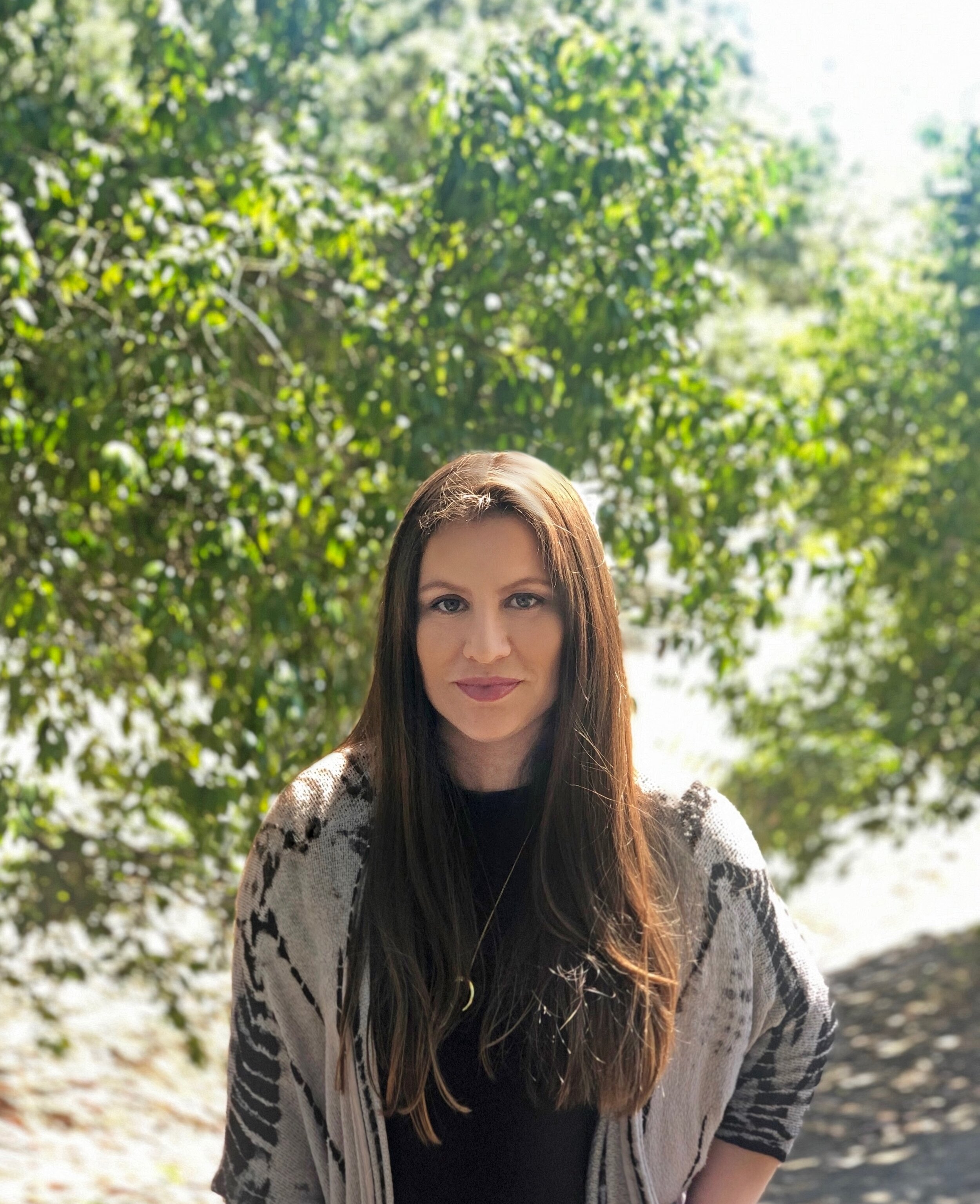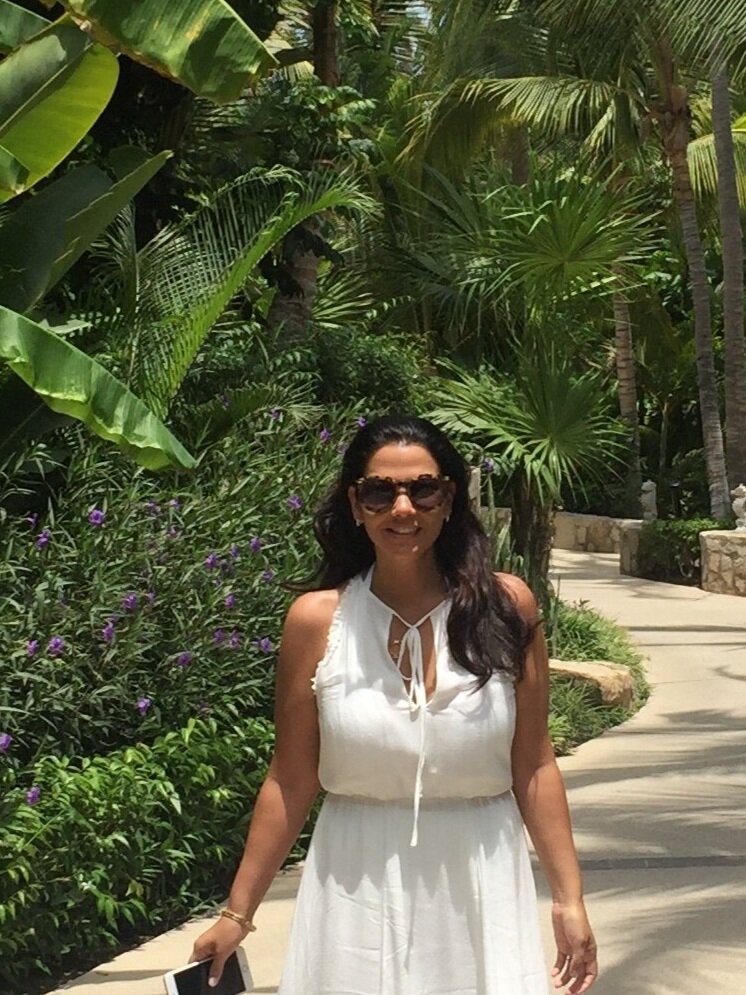We know how daunting it can be to start a new business, especially if you’re disrupting an industry or creating an entirely new one. When there is no path to follow, the biggest question is, where do I start? There is so much to do, but before you get ahead of yourself, let’s start at the beginning. To kick-start the process, and ease some of those first-time founder nerves, we’re asking successful entrepreneurs to share their stories in our series From Scratch. But this isn’t your typical day in the life profile. We’re getting into the nitty-gritty details—from writing a business plan (or not) to sourcing manufacturers and how much they pay themselves—we’re not holding back.
Photo: Courtesy of Vamigas
It’s no secret that the Latina consumer is vital to the beauty business. “Latinas spent more than $2 billion on makeup products in the U.S. in 2019, which was 18% of the total spending on beauty,” Christina Kelmon and Ann Murray-Dunning tell Create & Cultivate. “Latinas are also major users of beauty products; 60% use nine or more makeup products,” the co-founders explain. “This led us to the problem: There are very few brands that target Latinas, and the ones that do simply don’t know how to market to our complexity and heterogeneity.” This is the problem Kelmon and Murray-Dunning are aiming to solve with their clean skincare brand Vamigas.
From the co-founders (Kelmon is a fourth-generation Mexican-American and Murray-Dunning is a Chilean-American) to the ingredients used in each product (maqui, rosa mosqueta, prickly pear, and chia from Chile, Mexico, Peru, Brazil, and more), the brand is created by Latinas, for Latinas. “It was important for us to work with Latinas behind the scenes, and so we worked with someone Christina has worked with previously, a Latina formulator in Northern California, to bring 12 non-comedogenic ingredients from Latin America that are known for assisting Latina skincare concerns like hyperpigmentation, wrinkles, and dark spots,” explains Murray-Dunning.
Ahead, the co-founders share how they’ve built the brand from scratch, from self-funding the business to cultivating a wellness community.
What was the “lightbulb moment” for Vamigas? What inspired you to start your business and pursue this path?
Latinos are a quickly growing community in America, but Latinas have remained largely marginalized in skincare and beauty. There’s no major platform or brand around clean beauty, wellness, or self-care for Latinas.
We saw that the problem is that there are very few brands that target Latinas—and the ones who do simply don’t know how to market to the complexity and heterogeneity of the group. This creates a lot of mishaps and marketing campaigns based on old tropes and stereotypes. For example, how many times have we seen Latinas marketed to using the “telenovela” or the “spicy Latina” trope?
Latinas are from multiple countries and have multiple languages and skin tones. For example, there are upwardly mobile, multicultural Latinas that many brands forget or avoid or third- or fourth-generation Latinas who want to connect with their roots but are fully assimilated and have been here for generations. Marketing to them as a homogeneous group turns them off and makes them feel like an afterthought. This means that there is a huge untapped gap that is very ripe for authentic brands to tap into.
That’s where Vamigas comes in. We want to truly own that huge gap, with clean beauty products that speak to Latinas and that are healthy for them. A marketing strategy that knows how to speak to them, not down to them or treats them like an afterthought.
Did you write a business plan? If so, was it helpful? If not, what did you use to guide your business instead, and why did you take that approach?
Our plan was to follow a “lean product development” philosophy, where you first find your audience and you let that guide your company goals. Otherwise, if you start a product without any idea of if you will have an audience or fans, and you start pumping money into creating these products, that’s a huge risk. Nowadays, it’s easy to do customer development with platforms like Facebook and Instagram where you can easily engage your audience and find out their product preferences.
How did you come up with the name Vamigas, and what are some of the things you considered during the naming process?
Our name is Vamigas after “amigas,” which is a term of endearment in Spanish, and what we called each other, and our daughters’ initials V and M. We wanted a name that spoke to both sides of multicultural Latinas’ lives.
Photo: Vamigas Co-Founders Ann Murray-Dunning (left) and Christina Kelmon (right)
What were the immediate things you had to take care of to set up the business?
We set up our Shopify first, followed by creating our social channels and website, set up our business name, trademarks, and created our LLC.
How did you fund your business? What were the challenges and what would you change? Would you recommend that route to other entrepreneurs?
Vamigas is completely self-funded and we would recommend this to other entrepreneurs. However, every brand gets to a point where they will need to set aside a large portion of funds for retail partnerships, particularly around marketing. What was great about our team is that Ann came from the PR and marketing space and so we didn’t have to hire for that.
Having someone on the leadership team who can really own that part of the business is huge because you don’t really need to hire pricey agencies initially. Planning for when the time comes when you are too big to be self-funded—and may need to shift to outside funding—is critical.
Do you pay yourselves, and if so, how did you know what to pay yourselves?
No, we don’t pay ourselves yet.
How big is your team now, and did you have any hiring experience before this venture?
Our team consists of us, the two founders, a graphic designer, and a warehouse staff of three. Christina has hired and managed staff in her previous positions.
Did you hire an accountant? Who helped you with the financial decisions and setup?
Christina has experience in making financial decisions and setting things up, so she has been able to take care of this. Her best advice is to create a spreadsheet to keep track of everything—when things go in and things go out, budgeting, price per product, wholesale prices, retail relationships, sourcer information. That is incredibly important to have all in one, organized, clean place.
Photo: Courtesy of Vamigas
What has been the biggest learning curve during the process of establishing your business?
Making sure we are sourcing the best and highest quality ingredients, making sure we have the right partnerships in place that help us give back to the environment what we take out, and doing this while managing cost is always difficult when launching a new brand.
How did you promote your company? How did you get people to know who you are and create buzz?
Instagram has been a big brand builder for us; it’s where we have begun to create our wellness community. We’re seeing some really great organic growth from Latinas who are into wellness and clean beauty and who come to us not only to check out our products but also to check out news and fun stories on our blog, over at hola.vamigas.com. We also love PR, since media is in our co-founder Ann’s blood.
Do you have a business coach or mentor, and would you recommend one?
We do, and we recommend mentors for different “buckets.” For example, you might have a mentor who helps you how to manage a team, a mentor who might help you scale and manage growth, or a mentor with specific skills.
For example, in Ann’s career in PR, she had a mentor, Stephen Chavez, an incredible PR specialist in Los Angeles who taught her everything she knows about how to manage people and how to be a good boss and also a kind boss and to understand what your team needs.
What is one thing you didn’t do during the setup process that ended up being crucial to the business and would advise others to do asap?
Setting up and learning about EDI systems for our retail partners was a task that took some time, founders should learn this process if they have been approached by a retailer.
What is your number one piece of financial advice for any new business owner and why?
Give self-funding a try and keep as much equity as you can.
Photo: Courtesy of Vamigas















Missed out on Gina Bianchini’s incredible session from our Offsite? No worries! We’re sharing her insights on building a thriving community that feels like a real network, not just an audience.